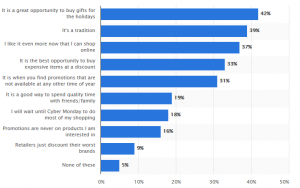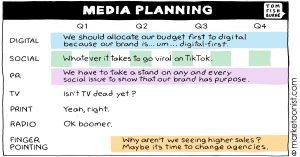In most circles, making the Most Wanted list is hardly a career goal. However, for manufacturers operating in the channel, it’s essential.
All manufacturers want to be the most desired company for channel partners to do business with. But all too often we hear manufacturers lament that their distributors don’t enjoy doing business with them. In many situations, the relationships still exist and function, but if a Net Promoter Score was applied, it would be like Minnesota in the winter … way below zero. So, what can manufacturers do to become a company channel partners just have to do business with?
Understanding channel partners’ pain points
Manufacturers need to confront reality with their channel partners. This involves bringing together a cross-functional team (channel sales, marketing, finance, and operations) and meeting partners face-to-face to explore all facets of the relationship and ask for examples where competitors are doing a better job of working with the partner. In many cases, the dialogue may reveal that channel partners find the organization too hard to do business with. While oftentimes accurate, this feedback can be hard to act on, so it’s important to dig deeper to uncover distributors’ specific pain points.
Here are the four most common partner complaints that could be keeping your organization off the Most Wanted Manufacturer list.
- Too much paperwork/”adminis-trivia.” Every incentive program has fine print around partner and product eligibility, start/end dates, combinations not allowed, and other void conditions, and they all require evidence of program utilization and execution. Multiply these requirements by the number of campaigns and manufacturers a partner works with and it’s easy to understand the root-cause of the headaches. Channel partners want to sell, not process paperwork. They don’t revel in contracts, amendments, documentation, rules, constraints, or conditions — that’s for the legal, administration, or office staff folks (who are usually scarce in many partners).
- Payment is too slow and inaccurate. Nothing is more frustrating to channel partners than having to spend hours on the phone or sorting through email threads trying to resolve payment issues regarding incentive, rebate, and ship-and-debit claims. Many manufacturers take an aggravating 45, 60, or even 75 days to receive, validate, process, and settle partner claims. That’s a long time to float money on behalf of the manufacturer. Even worse is when payment is finally received and it isn’t correct, triggering more conference calls, more emails, more paperwork, and unfortunately more ill will.
- Too much noise, not enough useful information. Partners are inundated with content from manufacturers: data sheets, technical briefs, incentive and rebate programs, discounts, SPIF programs, competitive information … the list is endless. But partners often overlook much of this data in search of true insight and information that will help them grow their business.
- There’s data sharing, but not real collaboration. While manufacturers often send pricelists, catalogs, data sheets, and other materials to partners via e-mail and online portals, this is often the extent of the collaboration (except with the largest partners). Channel partners of all sizes are looking for ways to continuously engage with manufacturers, not just when there are new product launches or quarterly business reviews (QBRs).
How to help your channel partners succeed
Notice a common theme? Channel partners are looking to eliminate low-value tasks and focus their limited resources on growing their business and working with their customers, not managing paperwork or chasing down payments.
For manufacturers, this means improving communication, collaboration, and processes. Many organizations start by replacing siloed systems and outdated, burdensome spreadsheet-driven or manual processes with a scalable channel management platform that automates and expedites onboarding, program design, and claims submissions, and utilizes reusable templates to streamline the creation, execution, and analysis of all types of channel campaigns. Beyond reducing cycle times, these solutions also:
- Reduce the risk of manual errors
- Provide both manufacturers and channel partners with real-time status of rebates, incentives, and ship-and-debit claims as well as insight into denied claims or partial payments
- Simplify QBRs by providing a common fact-base and clear audit trail for all channel transactions
The manufacturers on the Most Wanted list also provide meaningful business data and insights to support sales success, which can include:
- Tips and tricks that other partners are using to be successful
- Analysis and measurement of business performance by program and product
- Targeted incentive and rebate programs that are easy to understand
- Clear metrics and dashboards showing partner performance and achievement-to-plan
It isn’t easy to make it to the Most Wanted list. It requires a candid assessment of current channel-facing processes and systems and the willingness and funding to improve them. However, choosing the right platform and technology partner can be the difference between “hard to do business with” and “our partners tell other vendors to be like us.”
This post was originally published on LinkedIn.
(134)







